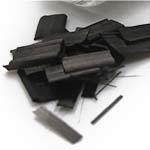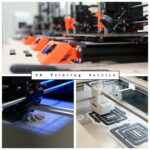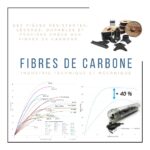
The important impact of carbon fibres in 3D printing
August 10, 2022Nanovia specializes in the production of composite filaments for 3D printing. Among the different compounds used, carbon fibres make a big impact on our FFF Filaments, such as Nanovia ABS CF, and Nanovia PETG CF.

Raw carbon fibres used in the compounding (“mixing”) process in making FFF filaments. 
3D printing polycarbonate filament reinforced with carbon fibres
Carbon fibres have a low volumic mass, and unlike aramid fibres, do not degrade on higher temperatures, and do not absorb humidity. Despite its technical applications they are relatively easy to compound. However, the abrasion caused by the fibres require the usage of specialized 3D printer equipment such as reinforeced nozzles. Carbon fibres are less abrasive than glass fibres which have a different use. Carbon fibres also have slight electro static discharge properties.
It are these properties that make them one our favoured fibres when it comes to turning specialized polymères into industrial strength filaments able to withstand high temperatures.
The below traction tests of our Nanovia ABS CF and PETG CF show the influence of the fibres on the materials.
The rigidity, represented by Young’s modulus, is improved by around 50 % for Nanovia ABS CF and almost doubles for Nanovia PETG CF. This added rigidity makes the material particularly suited for the fabrication of parts that are not supposed to deform.
La résistance ultime, soit la charge maximale que le matériau peut subir, se voit augmenter de 15 % pour le Nanovia ABS CF et 40 % pour le Nanovia PETG CF.
The ultimate résistance, the maximum amount of stress the material can endure before failing, is upped by 15 % for ABS CF and 40 % for Nanovia PETG CF.
One of the advantages of fibre reinforced composites in 3D printing, is that during the printing process the material deforms less (warping effect), which improves its ease of printing, especially with big parts. As of today the majority of Nanovia’s polymers have a carbon fibre reinforced version : PP CF, PEKK CF, PA 6 CF etc…
The latter notably is used by Lynxter and its partners in an industrial setting.

Categorised in: Products




